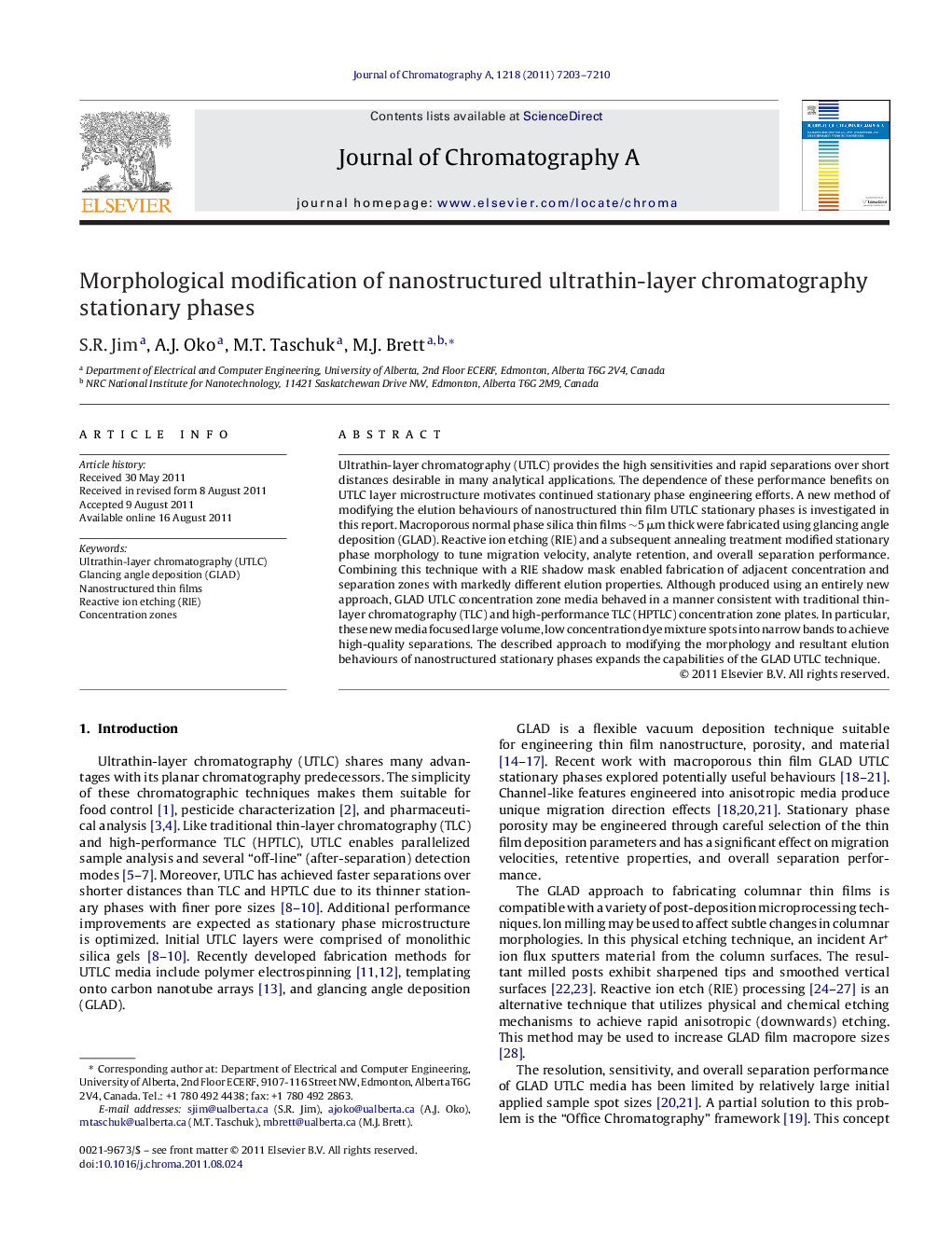| Article ID | Journal | Published Year | Pages | File Type |
|---|---|---|---|---|
| 1202372 | Journal of Chromatography A | 2011 | 8 Pages |
Ultrathin-layer chromatography (UTLC) provides the high sensitivities and rapid separations over short distances desirable in many analytical applications. The dependence of these performance benefits on UTLC layer microstructure motivates continued stationary phase engineering efforts. A new method of modifying the elution behaviours of nanostructured thin film UTLC stationary phases is investigated in this report. Macroporous normal phase silica thin films ∼5 μm thick were fabricated using glancing angle deposition (GLAD). Reactive ion etching (RIE) and a subsequent annealing treatment modified stationary phase morphology to tune migration velocity, analyte retention, and overall separation performance. Combining this technique with a RIE shadow mask enabled fabrication of adjacent concentration and separation zones with markedly different elution properties. Although produced using an entirely new approach, GLAD UTLC concentration zone media behaved in a manner consistent with traditional thin-layer chromatography (TLC) and high-performance TLC (HPTLC) concentration zone plates. In particular, these new media focused large volume, low concentration dye mixture spots into narrow bands to achieve high-quality separations. The described approach to modifying the morphology and resultant elution behaviours of nanostructured stationary phases expands the capabilities of the GLAD UTLC technique.
